Google Chrome is Google's new web browser, and I have been using it over the weekend. Here are some things they did not do right from a user interface design perspective, with explanations and violated UI principles. Over a couple of years I taught desktop user interface design to companies and institutions in the greater Stockholm area. This has helped me not only to spot some of the design errors, but also explain why they are errors. I used Chrome 1.0.154.43, which I downloaded yesterday, so it is a fresh Chrome to the test.
1. Are you talking to me?
When you try to reach https://gmail.com, this is the page that you get:

Now there is something fishy with this page, well actually several things. Google should of course design their e-mail pages in such a way that their browser does not need to warn about their own service, gmail. But there is more:
First, who is talking?

The user interface on the computer is supposed to be an extension of the the user. This is why in Windows it is called "My Computer" and not "Your Computer". If it said "Your Computer", the user interface would be talking to you, and that would not work, because the computer is not a person.
On the web it can be a little more complicated, because web pages made by other people can obviously not be an extension of you all the time. However, in the above page, Google has managed to use "you" and "me" on the same page. Who is talking to who? The principle that has been violated:
User interface design principle: The computer user interface is an extension of the user, not of the programmer. Do not use "you".
On top of that, "Help me" is something you say to a person, or something of similar intelligence, not to a computer.
2. Understand the world
So what more is fishy here? Let's look at the phrase "Help me understand". It feels like the browser is talking down to the user. But let's start with the word "understand". Understand what? There is at least a noun missing. Will they explain the entire history of hacking if the user clicks there ? We just do not know what they want to help the user to "understand". It is too abstract.
User interface design principle: Be concrete. The Internet is a big place, and being abstract can hence refer to anything. Which is a lot.
3. Feelings of helplessness
Thirdly it does feel like the browser is talking down to the user. The reason for this is that the language is slightly emotional. "Help me" is a phrase used in drama. Now the user interface should not do drama. "Help me", as innocuous as it may sound, has an air of helplessness around it.
Here is a screenshot of the top result, for a google search for the words "help me":
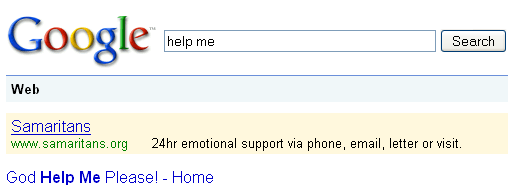
Instead of "Help me", they could have used the phrases "Get help" or "Explain", to get away from the emotional payload.
User interface design principle: Do not use emotional words and phrases. It is the user's job to be emotional, if he chooses to.
4. Do not use gray for active elements
Grey means "not editable" or "inactive" or "not selectable".
This is the way it should be:
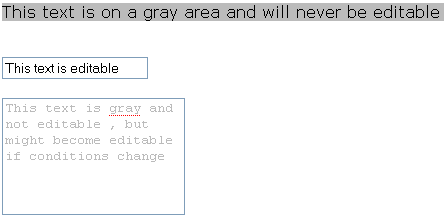
This is what the url line looks like in Chrome:

A better choice here would have been to color code the different parts as you do with syntax higlighting in a code editor.
User interface design principle: As stated above, gray means "not editable" or "inactive" or "not selectable". Do not use gray for elements that the user can edit or should click at.
5. Give me menus!
There are no normal menus in Chrome. Menus in a menu bar at the top is important. It makes programs look alike and hence give the same look and feel to different applications on the computer. If you have used one application you'll know how to use the others. Cars work the same: Steering wheel, accelerator and brake pedal are in the same place in all cars and work in the same way. Yes Eleanor, also in French cars. Nowadays.
User interface design principle: Use menus in the standard way for your desktop environment. In this way the user does not need to learn a special way of dealing with your application.
One of the most frequent violators to this look and feel uniformity are mp3 player applications. I just want to listen to mp3s. If I wanted to play with strange UI controls that do unforeseen things, I'd download an application especially for that purpose. Probably Myst.
Well, Google Chrome does not have menus, at least not in the usual place, in the menu bar. Menus do not only give consistency across applications, they are also quite useful. They give the action space of the application, i.e. the sum of all things you can do in the application.
User interface design principle: Menus help users understand what they can do in the application. Many people browse through the menus to get a feel for what they can do.
There are more things to say about menus and muscle memory but I will leave it at that for now.
6. Tweaks - under the hood? More likely than you think.
Once you do find the menus (they are buttons at the upper right) you can get to the options in Chrome.
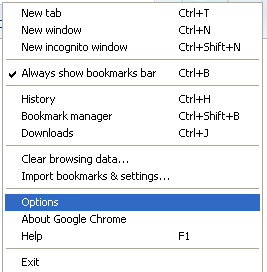
The Options dialog looks like this:

This sounds like the language of a bad mechanic. The user does not know how the things she wants to change Chrome fits in in this "Basics"-"Minor Tweaks"-"Under the Hood" categorization. The categorization is thus meaningless to the user. Imagine the doctor using this language when you come in with an ailment. Come to think it, Dr House probably would.
Internet Movie Database used to organise its online help a bit like this, with a freshman course, up to graduation. It does not work. The user does not care what level of difficulty Google (or imdb) thinks these settings should be aggregated under. The user wants meaningful labels, and these aren't. Many programs get away with labelling one tab (or corresponding ui element) with "advanced", but they do not label the other category as "not advanced". The words are abstract and hence have no meaning.
We revisit:
User interface design principle: Be concrete. The Internet is a big place, and being abstract can hence refer to anything. Which is a lot.
And:
User interface design principle: Use terms that are relevant to the user's perspective, not yours..
7. Chrome refuses to show my site
This is not a user interface problem. iI don't know what it is. Is this a pre emptive measure from Google? I cannot get Chrome to load this blog you are reading. This page you are reading loads fine though in Chrome.
Opera on Windows loads the front page fine:
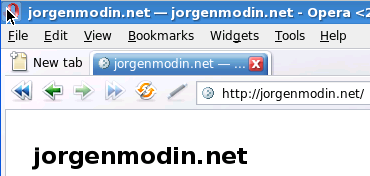
IE on Windows no problem:
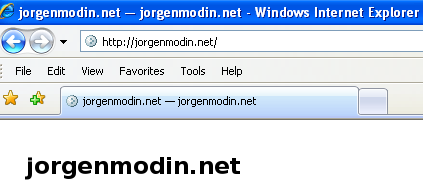
Konqueror on Linux no problem:
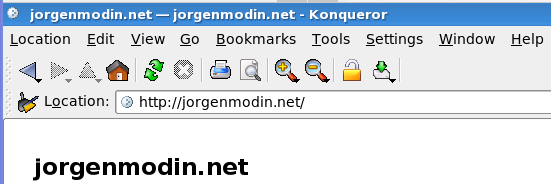
(And Konq uses more or less the same rendering engine as Chrome)
But Chrome fails:

"Unknown error". To boldly err were no one erred before?
Thanks for your attention.
Read more: Google Chrome - Download a new browser










